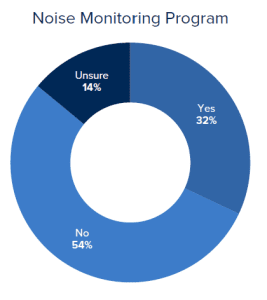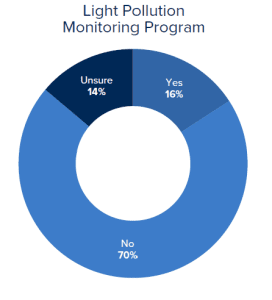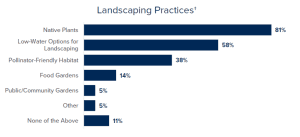In 2024, sports venues are stepping up in the race for sustainability, showing that stadiums and arenas can be powerful forces for environmental good. APTIM, a U.S.-based environmental consulting firm, has launched its fourth Sustainable Sport Index (SSI) Benchmarking Report, an annual survey and benchmarking report analysing sustainability practices in major, minor, and collegiate league sports venues. The report gives us a glimpse into how venues are setting new standards, inspiring fans, and creating greener spaces for everyone. This year the SSI report included a featured section on how the Sports for Nature (S4N) Framework is helping sports organizations protect and restore nature
This year’s SSI survey featured a new section on nature and biodiversity, revealing some new findings about the nature-focused practices:
💧 Water Champions: Every Drop Counts 💧
When it comes to saving water, sports venues are leading the way. Take Target Field in Minnesota, which partnered with Pentair to create a rainwater recycling system, slashing water usage by a whopping 50%. Even small changes, like installing WaterSense fixtures, can save 30% or more in water use. It’s a win-win for the planet and the venue.
🔊 Light, Air, & Noise: The Pollution Tackle Team 🔊


Stadiums are naturally vibrant and bustling environments with high levels of light and sound. Some venues have begun to address these impacts—32% of venues monitor noise levels, and 16% are implementing light pollution monitoring. Measures include the use of sound barriers and low-glare fixtures to help reduce the effects of light and noise on surrounding areas.
🌸 Biodiversity Boost: Welcoming Nature Back 🌸

81% of sports venues are adopting sustainable practices, such as planting native vegetation, to support biodiversity and strengthen local ecosystems.. This approach is exemplified by the integration of low-water landscaping practices, where drought-resistant, native plants are selected to minimize water consumption. Additionally, several venues have developed pollinator-friendly habitats that support local bee and butterfly populations, contributing to ecological balance. Some venues have also established community and food gardens, fostering green spaces that promote sustainable practices and provide educational opportunities for visitors. These initiatives reflect a structured commitment to safeguarding local biodiversity and preserving natural resources.
🤝 Fans & Sponsors: Teaming Up for Green 🤝
Engagement is where the magic happens! Venues with branded sustainability programs see a 95% boost in sponsorships. Fans are joining in, and sponsors love supporting a good cause, making these programs a natural choice. This year, 72% of venues are partnering with sponsors to drive sustainability projects that benefit everyone.
🏆 Sports for Nature: The Ultimate Playbook 🏆
From reducing pollution to restoring natural habitats, S4N provides the playbook venues need to take positive action for nature and inspire fans in the process. Nature-based solutions (NbS) can create up to one-third of the emissions reductions we need by 2030 to keep global temperature rise in check. By integrating NbS, sports venues not only reduce their carbon footprint but can also build resilience to climate-related extreme weather, and contribute to green spaces that fans and local communities can enjoy.
This year’s report demonstrates that sports venues can be more than places to watch a game—they can be leaders in environmental change, creating healthier, happier spaces for fans, players, and wildlife alike. Want to dive into the data and see the full picture? Check out the 2024 Sustainable Sport Index Benchmarking Report, where venues are proving that sustainability is the ultimate goal. 🏅
Topics
Education & Communications
Forests
Mountains
Nature protection
Nature restoration
Ocean
